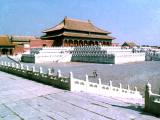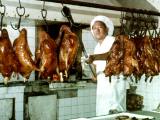
|
Beijing,
the capital of the People's Republic of China, is the nation's political and
cultural centre. Beijing is situated at 40 degrees north latitude and 116 degrees east longitude. It is 43 metres above sea level and 183 kilometres from the sea. Beijing covers an area of 16800 square kilometres, 38% of it is flat land and 62% mountains. Beijing has continental climate. Annual rainfall averages nearly 700 millimetres, most of it comes in July and August. Winter is dry and cold and has little snow. The frost-free period is 185 days. The best time to visit Beijing is May, September and October, when people enjoy bright sunny sky. Beijing has a population of over 12 million, about 6 million live in the city proper and the rest on the outskirts. It is divided into 10 districts and 8 counties.
|

|

|
|

|



